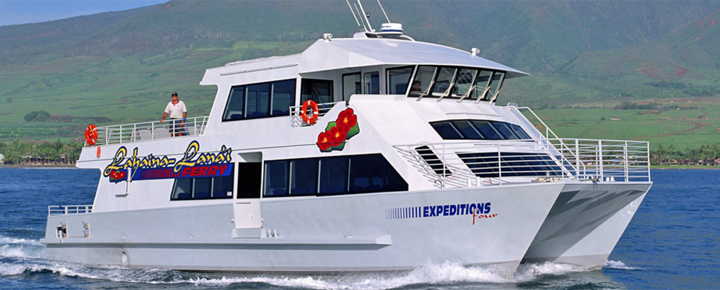Hawaii is a dream destination for many, offering a blend of stunning natural beauty, vibrant culture, and diverse experiences. With its 100+ islands, atolls, and islets, it’s easy to feel overwhelmed when planning a visit. However, focusing on the four largest islands—Kauai, Oahu, Maui, and the Island of Hawaii (often called the Big Island)—along with a few others, can provide an unforgettable journey. Here’s how to plan your epic multi-island trip.
Determine Your Travel Dates and Destinations
When planning a multi-island trip, start by setting your travel dates and choosing which islands you want to visit. Ideally, spend at least one week on each island, but if time is limited, aim for four to five days per island. This allows you to experience the unique attractions and activities each island has to offer without feeling rushed.
Make a list of things you want to do in order of importance. For example, if you’re interested in exploring active volcanoes and snorkeling with manta rays, book accommodations near these attractions. Consider flight and drive times as well, since weather, road conditions, and traffic can impact travel. Also, think about the best time to visit. Summer offers warm weather and minimal rain, but it’s also peak season with higher prices and crowds. Winter may have lower rates but more rain, so be prepared for cooler temperatures and possible activity cancellations.
Identify Your Travel Style
Your travel style will influence where you go and what you do. Some travelers prefer relaxing on the beach, while others enjoy adventure. Discuss your expectations with your travel companions to find the right mix of regions, tours, and hotels. If you’re not interested in the urban environment of Honolulu, consider staying in quieter areas like Waikiki or exploring other parts of Oahu.
Avoid overbooking your itinerary. Allow time for rest and balance, so you don’t end up exhausted. Follow an active day with some leisure time or a spa treatment to recharge.
Plan Your Route
Logistics play a big role in a successful multi-island trip. Start in Kauai and travel southeast to Oahu, Maui, and finally the Island of Hawaii. This route offers variety, from the slower pace of Kauai to the mix of urban adventures and countryside cruising on Oahu and Maui, ending with the energetic volcanic activity of the Big Island.
When booking flights, consider multicity options rather than round-trip. Check for direct interisland flights, as some may require a stopover. Early morning flights are often more direct. This approach can save time and make your trip more efficient.
Enlist the Help of Experts
While you can explore independently, guided experiences can enhance your trip. Native Hawaiian guides offer unique insights and cultural context, enriching your understanding of the islands. Many hotels provide complimentary Native Hawaiian-led activities, such as hula, language lessons, and lei-making sessions. Other properties offer farm tours or private tours to local sites.
For physical activities like hiking, choose reputable operators like Kauai Hiking Tours for safety and access to exclusive locations. Guided tours can also help maximize your time by bringing you to multiple sites in one day.
Make Reservations
Popular spots like Hanauma Bay on Oahu require reservations, and tours such as sunrise at Haleakalā on Maui often sell out. Book as early as possible to secure your spot. Also, reserve dinner and car rentals, as they can fill up quickly. On the Big Island, consider renting a 4WD vehicle for off-road explorations.
Pack Wisely
Hawaii’s microclimates mean you’ll encounter varying weather conditions. Pack layers, appropriate footwear, and a rain jacket. Don’t forget a Hawaiian shirt and binoculars for wildlife viewing. Some tours include outdoor gear, so inquire when booking.
Consider Additional Islands
If you have extra time, consider visiting Lanai, Molokai, or Ni’ihau. Ferries connect Maui and Lanai, while private charters can take you to Molokai or Ni’ihau. Although you can’t step ashore on Ni’ihau without an invitation, snorkeling nearby is an option.
Travel with Aloha
Respect the environment and local culture. Stay on marked trails, obey warnings, and be mindful of the land’s significance. Embrace the unexpected and stay present, whether it’s raining or sunny.
Transportation in Hawaii

Getting around Hawaii is relatively easy, with frequent flights connecting the islands. Interisland flights are short and frequent, with major airports on Oahu, Maui, the Big Island, and Kauai. Hawaiian Airlines and Southwest offer competitive options, while Mokulele Airlines serves smaller airports. Ferries only run between Maui and Lanai, making them ideal for day trips.
Public buses are available on larger islands, but they can be slow and inconvenient. Renting a car is essential for exploring beyond main towns, especially on Kauai and the Big Island. Mopeds and motorcycles are available but expensive. Taxis and ride-sharing services like Uber and Lyft are options, though availability varies.
Cycling is eco-friendly but challenging due to narrow roads and tropical weather. Bike rentals are available in resort areas, and some hotels offer free or discounted rentals. Accessible transportation options are available for those with disabilities, including ramps, accessible vehicles, and designated parking.
Challenges of a Ferry System

Despite the convenience of air travel, a ferry system faces significant challenges. Hawaii’s ocean conditions, with strong currents and unpredictable weather, make ferry travel difficult. Environmental concerns about marine pollution and invasive species also pose risks. Cultural and community opposition highlights the desire to protect Hawaii’s unique identity and sustainable tourism practices.
Economically, ferries require substantial investment and face high operational costs. Air travel remains the preferred choice due to its scalability and efficiency.
In conclusion, planning a multi-island trip to Hawaii requires careful consideration of travel dates, destinations, and logistics. By following these tips, you can create a memorable and balanced itinerary that showcases the beauty and diversity of the islands. Whether you’re exploring the beaches of Oahu, the volcanoes of the Big Island, or the serene landscapes of Kauai, Hawaii offers an unforgettable experience for every traveler.



